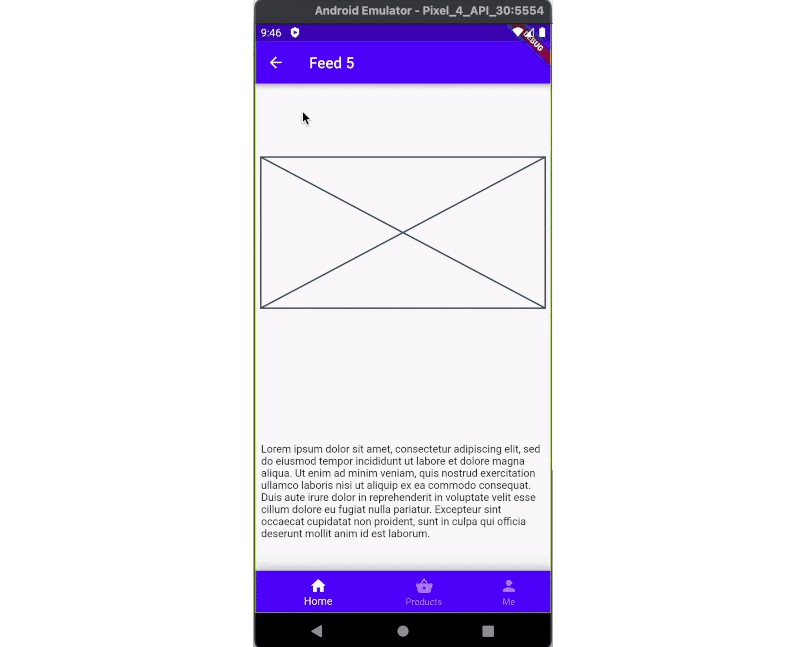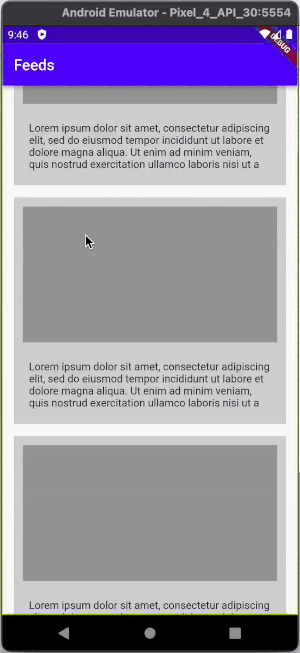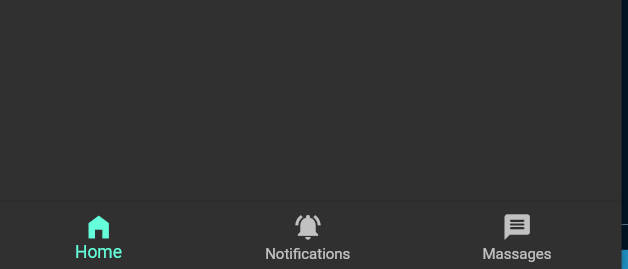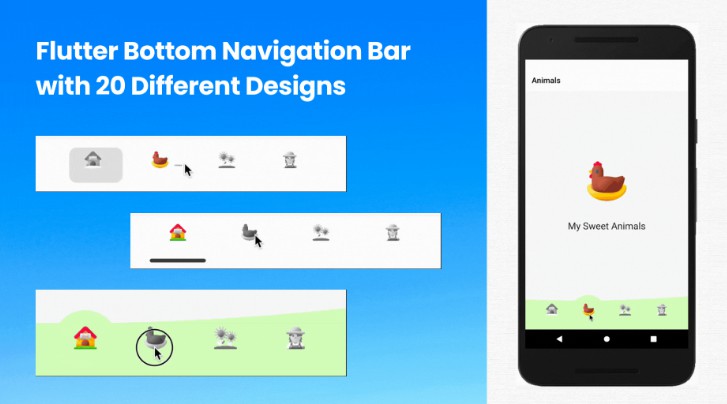navbar_router 0.1.2
This is the ultimate BottomNavigionBar created by considering the advanced use cases in real world applications. This widget handles the boilerplate code required to handle the below features with minimal code and hassle. All you need to do is specify the navbar menu items, routes and destinations and the rest will be taken care by the navbar_router.
Features
- Smooth transitions when changing navbar destinations
- Ability to push routes in the nested or root navigator
- Notifies onBackButtonPress to handle app exits like a pro
- Programmatically control state of bottom navbar from any part of widget tree e.g change index, hide/show bottom navbar, pop routes of a specific tab etc
- persist state across bottom navbar tabs
- Tapping the same navbar button pops to base route of nested navigator (same as instagram)
- Switch the Navbar destination with animation
Heres a sample app built using this package to see how it works.
video demo of the sample app
This package will help you save atleast 50% lines of code in half the time required to implement the above features. Heres the same sample app without the package which requires around 800 lines of code.
Usage
Add to pubspec.yaml
navbar_router: ^0.1.2
Example
class HomePage extends StatelessWidget {
HomePage({Key? key}) : super(key: key);
List<NavbarItem> items = [
NavbarItem(Icons.home, 'Home', backgroundColor: colors[0]),
NavbarItem(Icons.shopping_bag, 'Products', backgroundColor: colors[1]),
NavbarItem(Icons.person, 'Me', backgroundColor: colors[2]),
];
final Map<int, Map<String, Widget>> _routes = const {
0: {
'/': HomeFeeds(),
FeedDetail.route: FeedDetail(),
},
1: {
'/': ProductList(),
ProductDetail.route: ProductDetail(),
},
2: {
'/': UserProfile(),
ProfileEdit.route: ProfileEdit(),
},
};
@override
Widget build(BuildContext context) {
return NavbarRouter(
errorBuilder: (context) {
return const Center(child: Text('Error 404'));
},
onBackButtonPressed: (isExiting) {
return isExiting;
},
destinationAnimationCurve: Curves.fastOutSlowIn,
destinationAnimationDuration: 600,
decoration:
NavbarDecoration(navbarType: BottomNavigationBarType.shifting),
destinations: [
for (int i = 0; i < items.length; i++)
DestinationRouter(
navbarItem: items[i],
destinations: [
for (int j = 0; j < _routes[i]!.keys.length; j++)
Destination(
route: _routes[i]!.keys.elementAt(j),
widget: _routes[i]!.values.elementAt(j),
),
],
initialRoute: _routes[i]!.keys.first,
),
],
);
}
}
Features Breakdown
Fading between NavbarDestinations
You can have smooth Transitions between NavbarDestinations by setting the destinationAnimationCurve and destinationAnimationDuration properties.
defaults to
destinationAnimationCurve: Curves.fastOutSlowIn,
destinationAnimationDuration: 700,
Hide or show bottomNavigationBar
You can hide or show bottom navigationBar with a single line of code from anywhere in the widget tree. This allows you to handle useCases like scroll down to hide the navbar or hide the navbar on opening the drawer.
NavbarNotifier.hideBottomNavBar = true;
| Hide/show navbar on scroll | Hide/show navbar on drawer open/close |
|---|---|
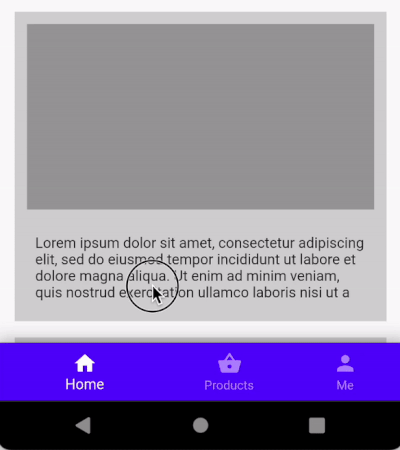 |
 |
Notify onBackButtonPress
navbar_router provides a onBackButtonPressed callback to intercept events from android back button. Giving you the ability to
handle app exits (e.g you might want to implement double press back button to exit).
sample code implementing double press back button to exit
onBackButtonPressed: (isExitingApp) {
if (isExitingApp) {
newTime = DateTime.now();
int difference = newTime.difference(oldTime).inMilliseconds;
oldTime = newTime;
if (difference < 1000) {
hideSnackBar();
return isExitingApp;
} else {
showSnackBar();
return false;
}
} else {
return isExitingApp;
}
},
Docs
destinations: A List of DestinationRouter to show when the user taps the [NavbarItem].
Each DestinationRouter specifies a List of Destinations, initialRoute, and the navbarItem corresponding to that destination.
errorBuilder: A WidgetBuilder to show the user when the user tried to navigate to a route that does not exist in the [destinations].
decoration : The decoraton for Navbar has all the properties you would expect in a [BottomNavigationBar] to adjust the style of the Navbar.
onBackButtonPressed: A Function which defines whether it is the root Navigator or not if the method returns true then the Navigator is at the base of the navigator stack
destinationAnimationCurve: Curve for the destination animation when the user taps a navbar item. Defaults to Curves.fastOutSlowIn.
destinationAnimationDuration: The duration in milliseconds of the animation of the destination. Defaults to 700ms.
shouldPopToBaseRoute: A boolean which decides, whether the navbar should pop to the base route (pop all except first) when the current navbar is tapped while the route is deeply nested. This feature similar to Instagram’s navigation bar defaults to true.
Curious how the navbar_router works?
Read more in a medium blog post for detailed explanation.
Contribution
Contributions are welcome! for more details on how to contribute, please see the contributing guide
